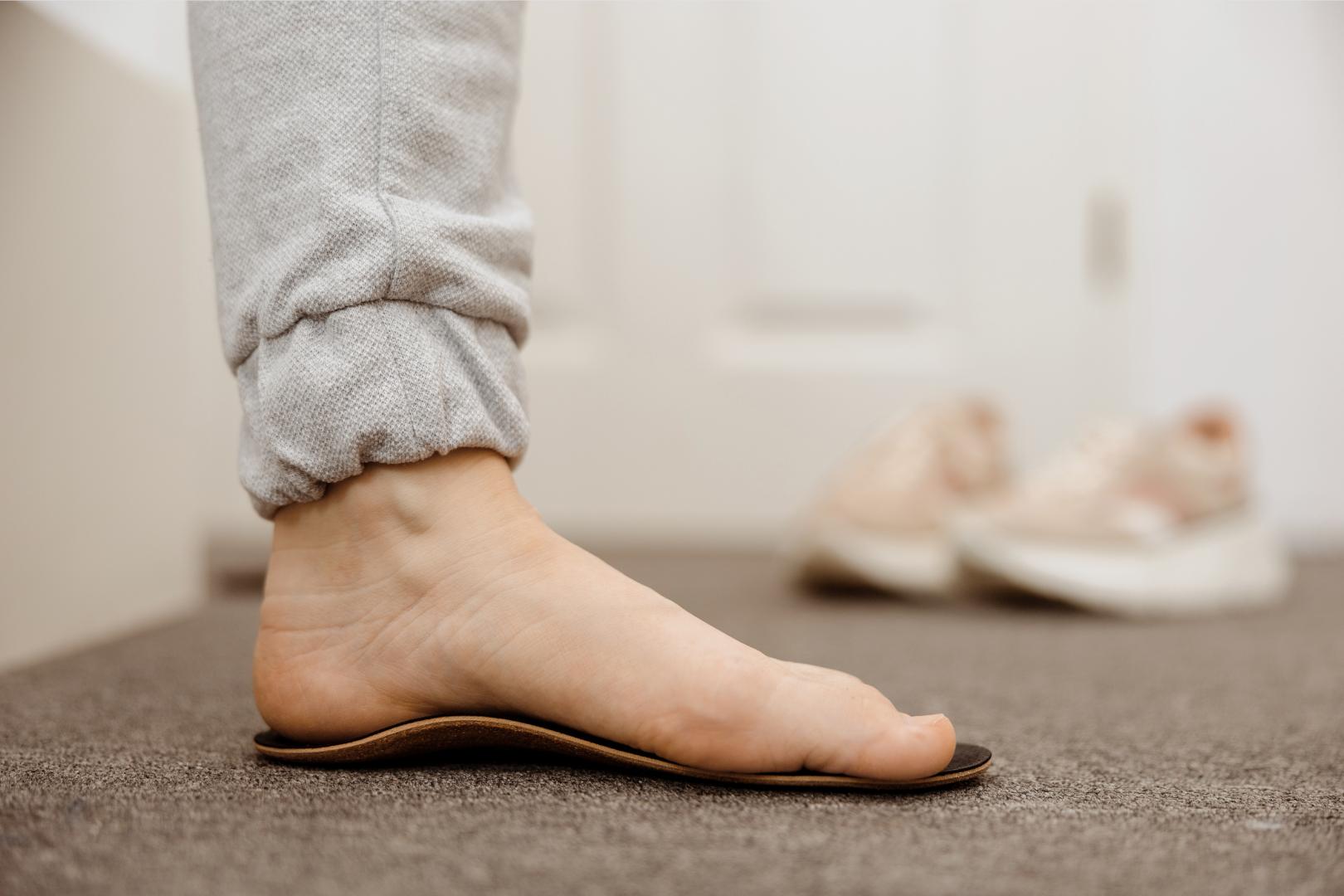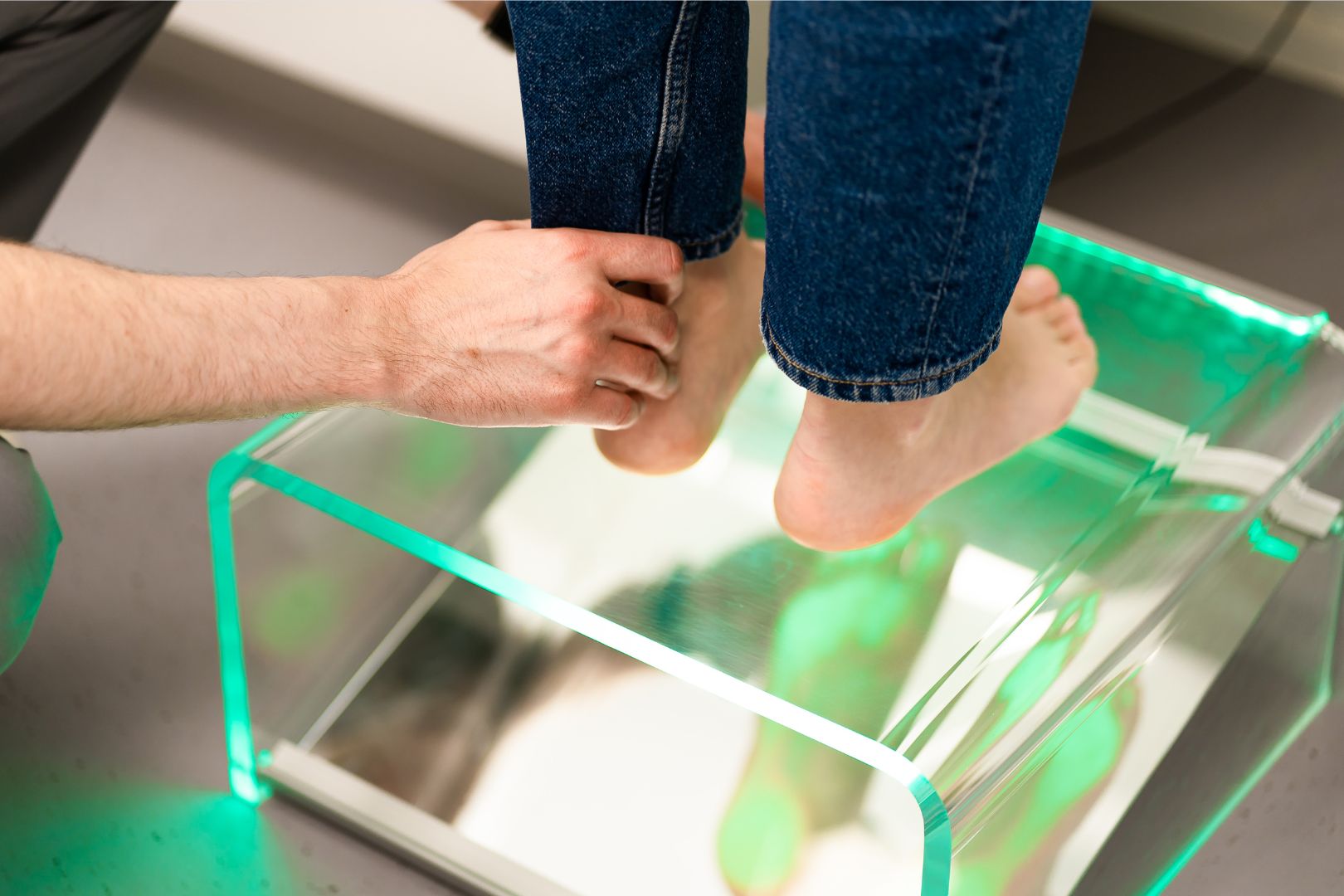Introduction
Foot arch types significantly determine your susceptibility and risk to various foot conditions, including plantar fasciitis. Understanding your foot arch can provide valuable insights into why you may be experiencing heel pain and how best to manage it. This article will explore the different types of foot arches, their characteristics, and their impact on plantar fasciitis.
Types of Foot Arches
1. Normal Arch
- Characteristics: Balanced arch visible to the eyes, usually an even weight distribution.
- Impact on Plantar Fasciitis: Individuals with normal arches have a lower risk of developing plantar fasciitis. Proper alignment and weight distribution help mitigate undue stress on the plantar fascia. Injury generally occurs due to poor footwear choices or physical activities instead.
2. Flat Feet (Low Arch)
- Characteristics: Arch sits low, almost entirely or entirely flat to the ground. Heels also tilt inwards from the back view.
- Impact on Plantar Fasciitis: Flat feet tend to cause an inward rolling of the ankle, known as overpronation. This can put extra strain and stretch on the plantar fascia, making individuals more susceptible to plantar fasciitis.
3. High Arch
- Characteristics: Elevated arch, excessive load on the ball and heel of the foot.
- Impact on Plantar Fasciitis: High arches can lead to underpronation or supination, limiting the body’s ability to absorb shock when walking or running. This can cause stress on the plantar fascia, leading to plantar fasciitis.

How to Determine Your Arch Type
1. Wet Footprints Test
The simplest way to determine your arch type is the wet test. Wet the sole of your foot, then step onto a dry, flat surface. The footprint left behind will give an indication of your arch type.
2. Professional Assessment
Consulting a podiatrist for a comprehensive foot assessment is certainly the most accurate way to determine your arch type and its implications for your foot health.
Managing Plantar Fasciitis Based on Arch Type
Flat Feet
- Orthotic Insoles: Custom orthotics can provide the necessary support to help correct overpronation and reduce the strain on the plantar fascia.
- Stability Shoes: Footwear with built-in pronation control can be beneficial.
High Arches
- Cushioned Insoles: High arches require cushioning to balance out the pressure points on the foot.
- Shock-Absorbing Footwear: Shoes with good cushioning can help manage the discomfort associated with high arches.
Normal Arches
- Regular Footwear Check: Ensure your shoes are in good condition and offer adequate support.
- Preventive Exercises: Routine stretches and strengthening exercises can help maintain foot health. If you like to run, it is important to learn the tips to prevent running injuries.
Conclusion
Understanding your foot arch type is useful in the prevention and management of plantar fasciitis. Selecting the right footwear and orthotic choices based on your arch type can help to provide significant relief and reduce the risk of developing this painful condition.
Arming yourself with the knowledge of your arch type and its impact can be the first step towards effective plantar fasciitis treatment and prevention. If you are unsure about your foot type, feel free to consult us or a healthcare provider for a comprehensive foot evaluation today.
Further Reading
- Plantar Fasciitis – Comprehensive guide to understanding plantar fasciitis.
- The Role of Shockwave Therapy in Plantar Fasciitis Treatment – Learn how shockwave therapy can be an effective treatment for plantar fasciitis.
- Plantar Fasciitis Exercises: A Step-by-Step Guide – Practical exercises for managing and preventing plantar fasciitis.
Jackie Tey
Chief Podiatrist, B.Pod(Hons). Your foot and lower limb specialist passionate about raising awareness for foot and lower limb health.








